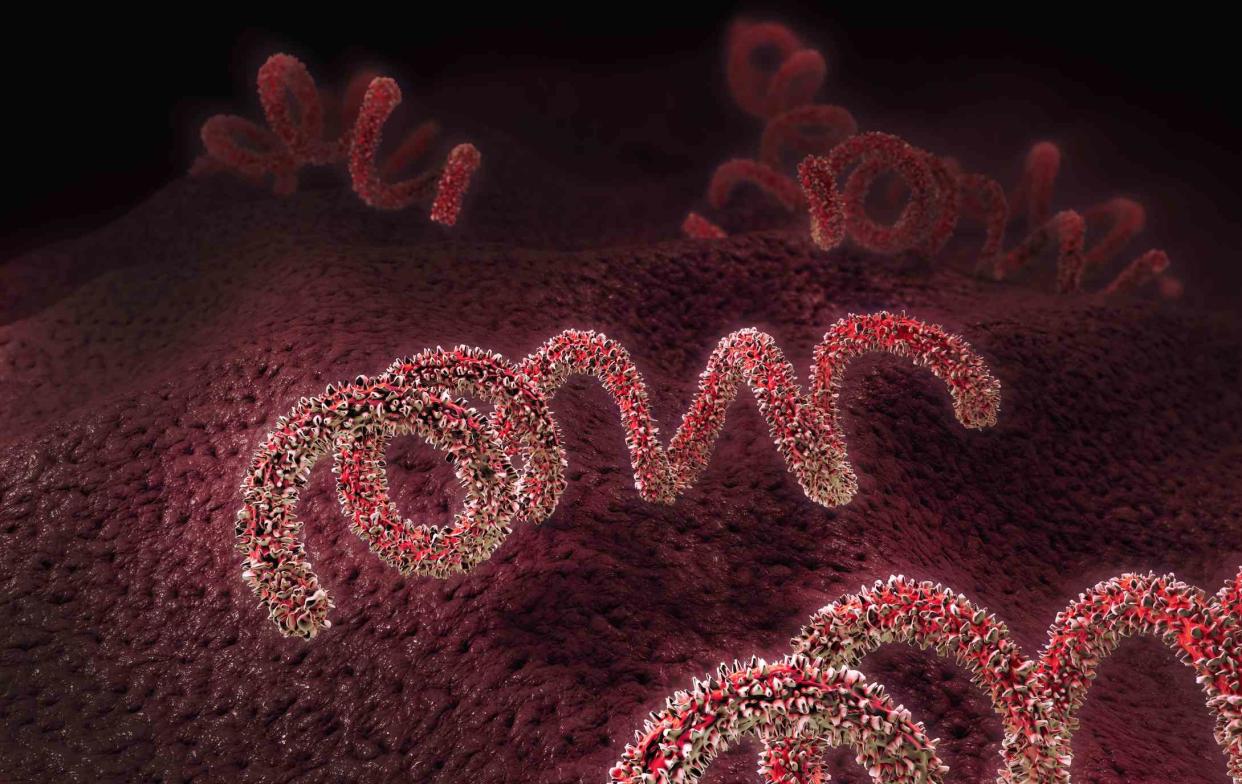Syphilis Is Making a Comeback. Here's What to Know About Symptoms and Prevention

Christoph Burgstedt / Getty Images
Fact checked by Nick Blackmer
Syphilis cases in the U.S. have drastically increased in the last few years after it was nearly eliminated by the early 2000s.
A number of factors have contributed to this, including limited testing during the pandemic and a general decrease in condom use.
Syphilis can lead to serious and even fatal outcomes if left untreated, so protect yourself by using condoms and getting routine STI tests.
The United States has been seeing a resurgence of diseases that were once nearly eradicated, and now there’s another one to add to the list: syphilis.
The rate of syphilis cases is at its highest since 1991. The Centers for Disease Control (CDC) reported a 68% increase in syphilis cases from 2017 to 2021. Congenital syphilis, which is passed to a developing fetus during pregnancy, saw an even more drastic increase—185%—within the same period. CDC data also showed an upward trend in other sexually transmitted infections (STIs) such as gonorrhea and chlamydia.
While syphilis is treatable with antibiotics, it can cause organ damage and death if left untreated. Syphilis lesions or rashes can also be easily confused for those of other conditions, which leave many cases undiagnosed.
Monte Swarup, MD, FACOG, a board-certified OB-GYN and founder of the HPV information site HPV HUB, told Verywell that there has been a dramatic rise in STIs during the pandemic because of service disruptions and inadequate funding. He said fewer people are using condoms, partly because effective HIV prevention drugs have made unprotected sex seem less risky.
Gynecologist Mary Jane Minkin, MD, said people are also relying more on long-term birth control, which doesn’t protect against STIs. She added that COVID “burnout” may also lead to a more lax attitude when it comes to sexual health protection.
How to Spot the Symptoms of Syphilis
Syphilis has a fairly long incubation period—ranging from 10 to 90 days—which makes it difficult to catch.
Many of the symptoms are subtle, and the disease has been called the “great imitator” for its tendency to mimic other conditions such as canker sores, herpes, and Lyme disease. It also appears in four distinct stages: primary syphilis, secondary syphilis, latent syphilis, and tertiary syphilis.
During the primary syphilis stage, people will first get round, firm, and painless sores—called “chancres”—on their genitals, anus, rectum, or mouth. What makes diagnosis challenging is that the chancres will typically disappear without any treatment.
Related:Sorely Confused: The Difference Between Cold Sores, Canker Sores, and Chancres
Several weeks later, during the secondary stage, people might experience symptoms such as fever, swollen lymph nodes, and rashes that can appear on the hands and feet or, at times, on other parts of the body.
“Again, the bad thing is that this state goes away without any therapy,” Minkin said. “But the syphilis organisms, called spirochetes, stay alive in the body, and can wreak havoc on just about any organ system.”
Related:Symptoms of Syphilis
If someone is left untreated, they could experience the last stage of syphilis 10 to 30 years after the initial infection. It can damage multiple organs, including the skin, heart, brain, bones, and liver, and it can be fatal.
How to Protect Yourself from Syphilis
There is currently no vaccine for syphilis, mainly because the molecular mechanisms for syphilis are poorly understood, Swarup said. Instead, current research is focused on the outer membrane “adhesins” that bind to host cells.
The best way to protect yourself from this disease, according to Minkin and Swarup, is to get tested for STIs before entering a new sexual relationship and to always use condoms.
Swarup added that syphilis is curable with the right antibiotics, but the infection can still cause irreversible damage.
“This is a nasty disease, and the tragedy is that it is so easy to test for it,” Minkin said. “A simple blood test will do the trick!”
If you’re sexually active, be sure to use condoms and get tested for STIs regularly. Syphilis can be diagnosed with a simple blood test and treated effectively with antibiotics before it becomes more serious.

